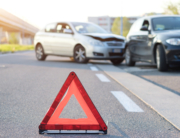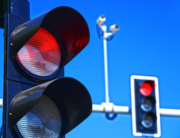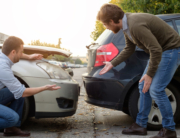How many times have you left somewhere late at night and dreaded the drive home because you just wanted to be asleep in bed? It is an all too common situation for some Americans, and in many cases, this drowsy driving has a dangerous outcome.
The Facts about Drowsy Driving
In 2016, the Governors Highway Safety Association (GHSA) compiled data on drowsy driving accidents from several national research sources. The following sources reported some troubling numbers:
- The National Highway Traffic Safety Administration (NHTSA) reported over 72,000 police-reported crashes resulting from drowsing driving between 2009 and 2013.
- The National Center for Statistics and Analysis found drowsy driving injured an estimated 41,000 people and killed more than 800 people between 2009 and 2013.
- The AAA Foundation for Traffic Safety analyzed NHTSA data and found approximately 7 percent of all crashes and 16.5 percent of fatal crashes occurred due to drowsy drivers.
The GHSA report estimates approximately 328,000 drowsy driving accidents occur on U.S. roads every year. Of these, 109,000 result in injuries and 6,400 result in death.
Who engages in drowsy driving?
The GHSA report found that drowsy drivers cause an estimated 10 to 20 percent of crashes involving large trucks or busses. Because these commercial drivers often drive for long hours without breaks, and because their jobs rely on the maximum distance traveled, they often drive drowsy to get in more miles.
Another large section of drowsy drivers are those 25 years of age and under. More than 50 percent of drowsy driving crashes involve a driver age 25 or younger. At this age, drivers might still be new to driving and unaware of their limits, or unwilling to admit their limitations when tired.
How to Avoid the Effects of Drowsy Driving
Researchers have equated drowsy driving to a similar state of impairment as alcohol.
- Going 18 hours without sleeping is equal to about 0.05 percent blood alcohol concentration (BAC), close to the legal limit.
- Going 21 hours without sleeping causes the average person to become impaired to the point of 0.08 percent BAC.
- Going 24 or more hours without sleeping puts you in a state of impairment well beyond the legal limit of driving while intoxicated (0.10 percent).
Caffeine and energy drinks are not the solution to driving while drowsy. The best way to avoid causing an accident is to get plenty of rest. If you can arrange to stay at your current location, do so, or take an alternative form of transportation home. If you become fatigued while driving, pull over in a safe, well-lit area and rest up.
For more information on Florida’s stance on drowsy driving, visit the Florida Department of Transportation’s page on drowsy driving and the Drowsy Driving Florida website, established in memory of a young victim of drowsy driving.
Montero Law provides important information on Florida driving safety and what to do after a car accident.
Visit our blog to learn more about traffic crash causes and recovery. For help with a car accident claim, contact us at 954-767-6500.
 English
English  Español
Español 




